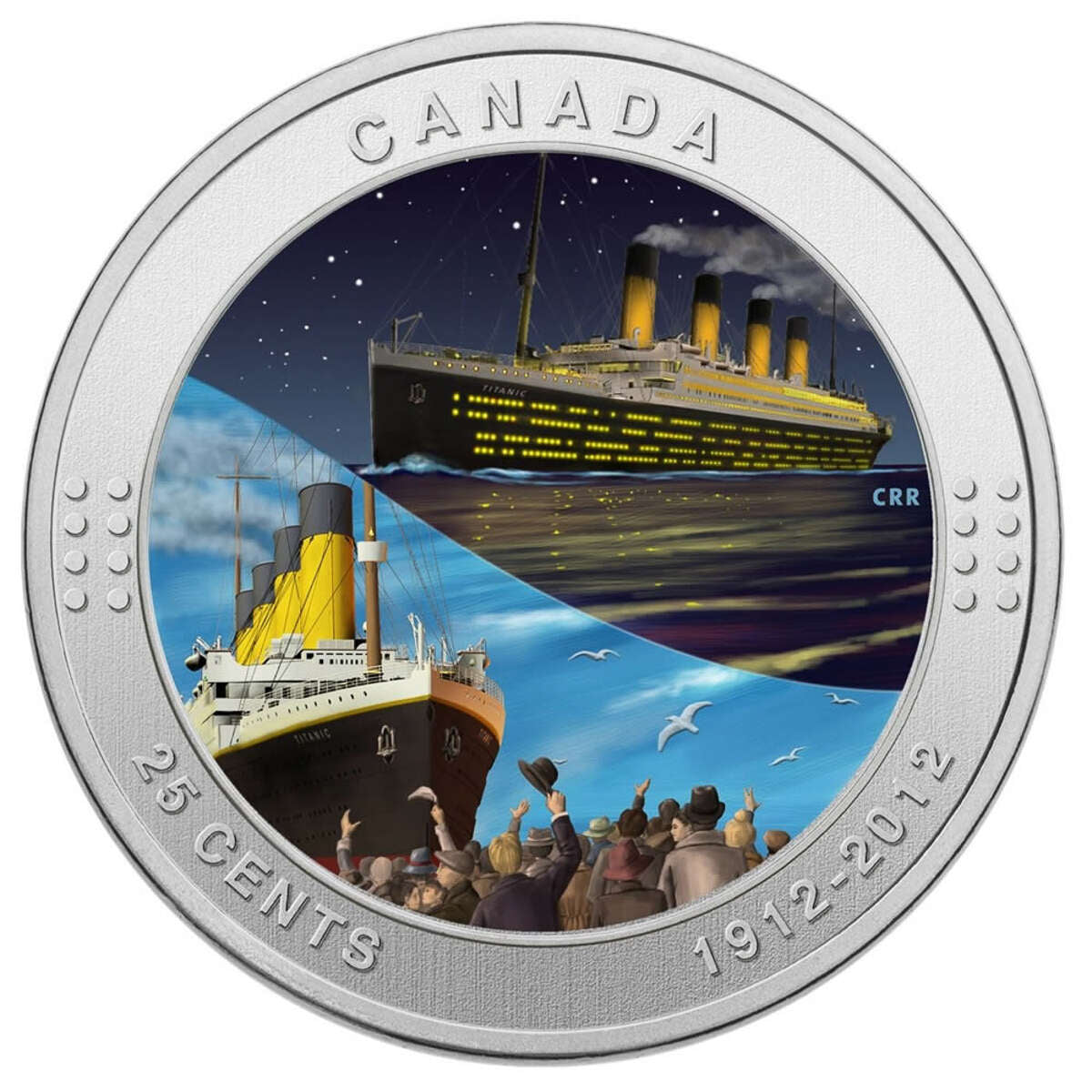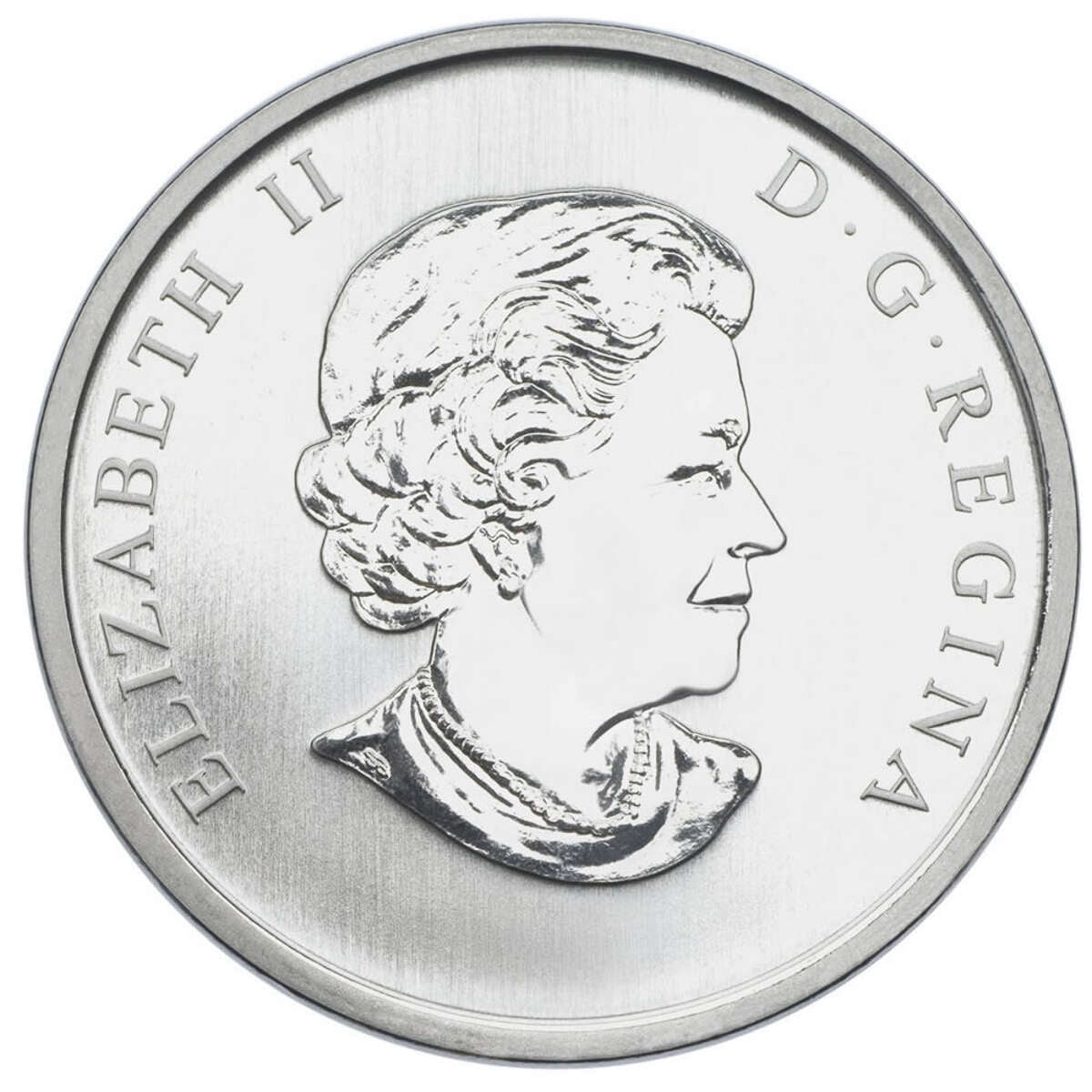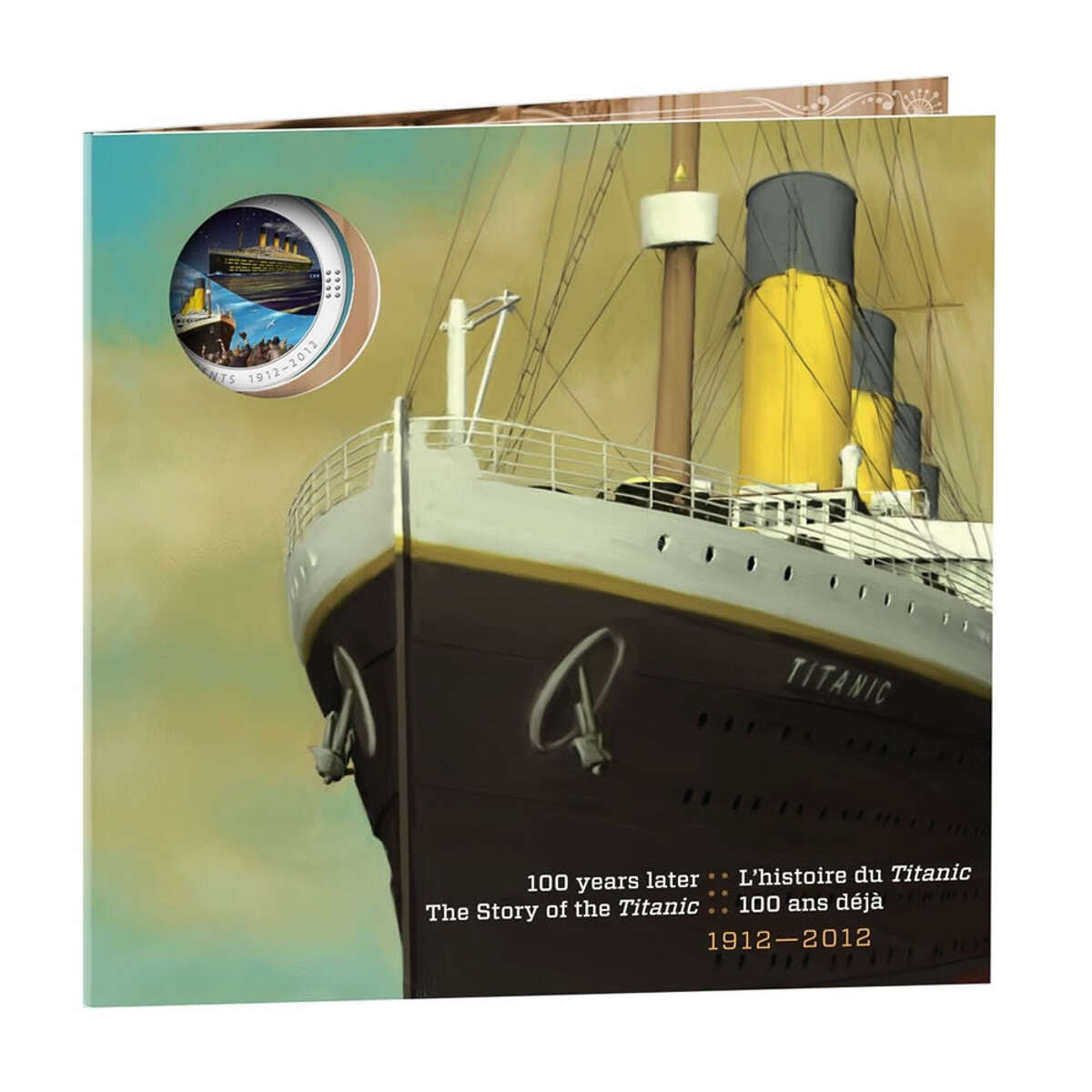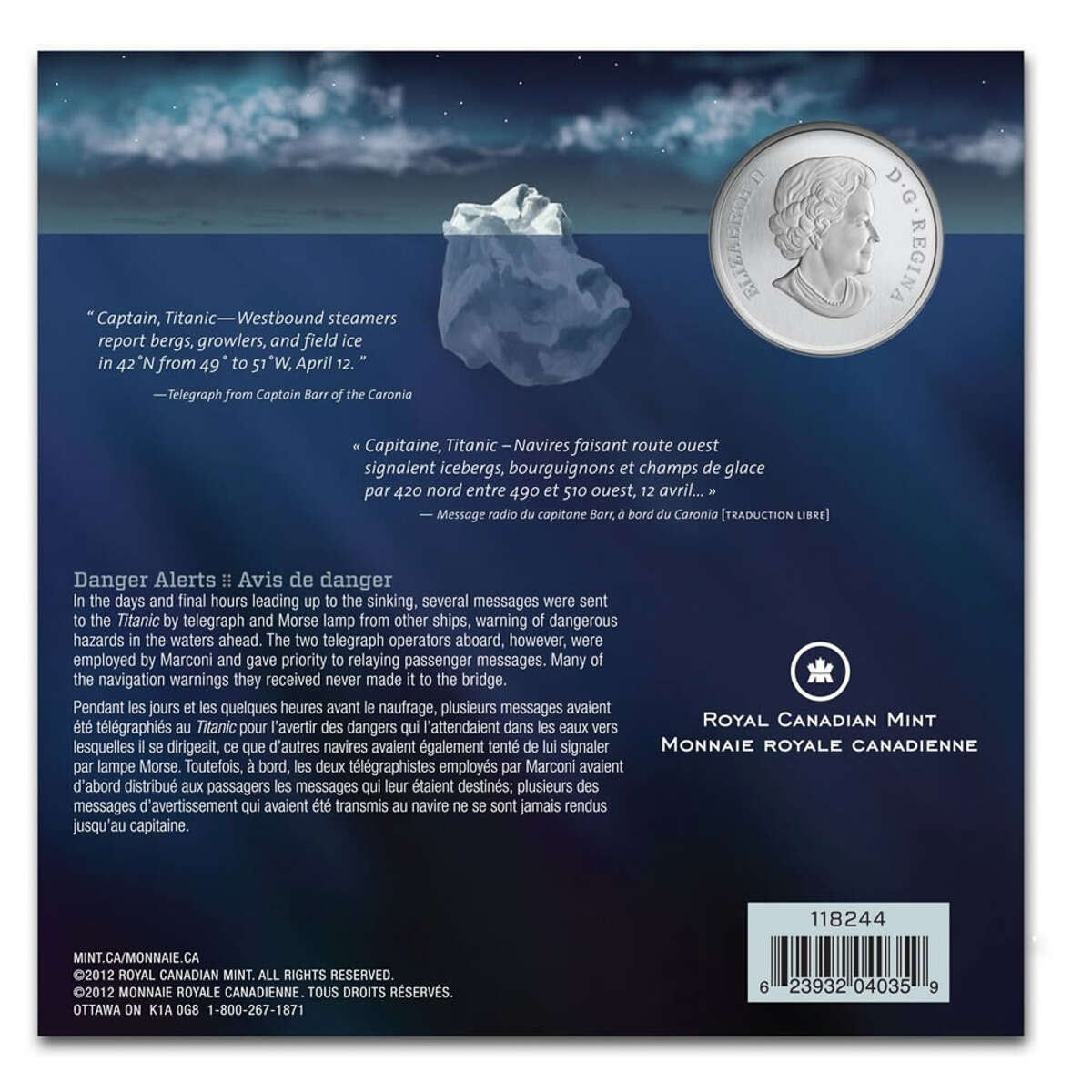Description
Commemorating the 100 years since the Titanic's maiden voyage, this 25 cent coloured coin is an ideal gift for Titanic enthusiasts. The coin is presented in a presentation folder full of illustrations, facts and a timeline of the voyage.
She was the grandest passenger liner ever to grace an ocean. As indomitable as any vessel created, as elegantly appointed as the finest hotels, Titanic was a triumph of engineering and style. When she slid beneath the icy waters off the coast of Newfoundland in the pre-dawn hours of April 15, 1912, the world was astonished. One hundred years later, Titanic lives on as an enduring symbol of accomplishment and loss—of hubris and heroism—on an epic scale.
To build the world’s greatest ship, the White Star Line enlisted the world’s most renowned shipbuilders. Harland & Wolff employed 3000 workers using new technology such as hydraulic riveting machines—using just over 3,000,000 rivets, working from plans that included innovative engineering touches designed to prevent catastrophic flooding. The onboard experience, meanwhile, defined five-star opulence with its fine art, fine furnishings and fine dining—a vision exemplified by first class passengers emerging from their staterooms to descend the majestic grand central staircase on their way to an exquisite 11-course dinner.
The ship’s legendary sole voyage came to a shocking conclusion 640 kilometers from the Grand Banks of Newfoundland, which meant Canada would be forever linked to the name Titanic. The steamship Carpathia, which rescued approximately 700 passengers that night, would go on to be a troopship for Canadian forces in World War I. Three Halifax ships were involved with the recovery of bodies, and many of those victims have found their final resting place on Canadian soil.
She was the grandest passenger liner ever to grace an ocean. As indomitable as any vessel created, as elegantly appointed as the finest hotels, Titanic was a triumph of engineering and style. When she slid beneath the icy waters off the coast of Newfoundland in the pre-dawn hours of April 15, 1912, the world was astonished. One hundred years later, Titanic lives on as an enduring symbol of accomplishment and loss—of hubris and heroism—on an epic scale.
To build the world’s greatest ship, the White Star Line enlisted the world’s most renowned shipbuilders. Harland & Wolff employed 3000 workers using new technology such as hydraulic riveting machines—using just over 3,000,000 rivets, working from plans that included innovative engineering touches designed to prevent catastrophic flooding. The onboard experience, meanwhile, defined five-star opulence with its fine art, fine furnishings and fine dining—a vision exemplified by first class passengers emerging from their staterooms to descend the majestic grand central staircase on their way to an exquisite 11-course dinner.
The ship’s legendary sole voyage came to a shocking conclusion 640 kilometers from the Grand Banks of Newfoundland, which meant Canada would be forever linked to the name Titanic. The steamship Carpathia, which rescued approximately 700 passengers that night, would go on to be a troopship for Canadian forces in World War I. Three Halifax ships were involved with the recovery of bodies, and many of those victims have found their final resting place on Canadian soil.






